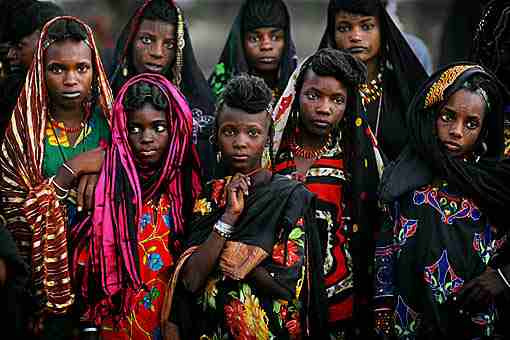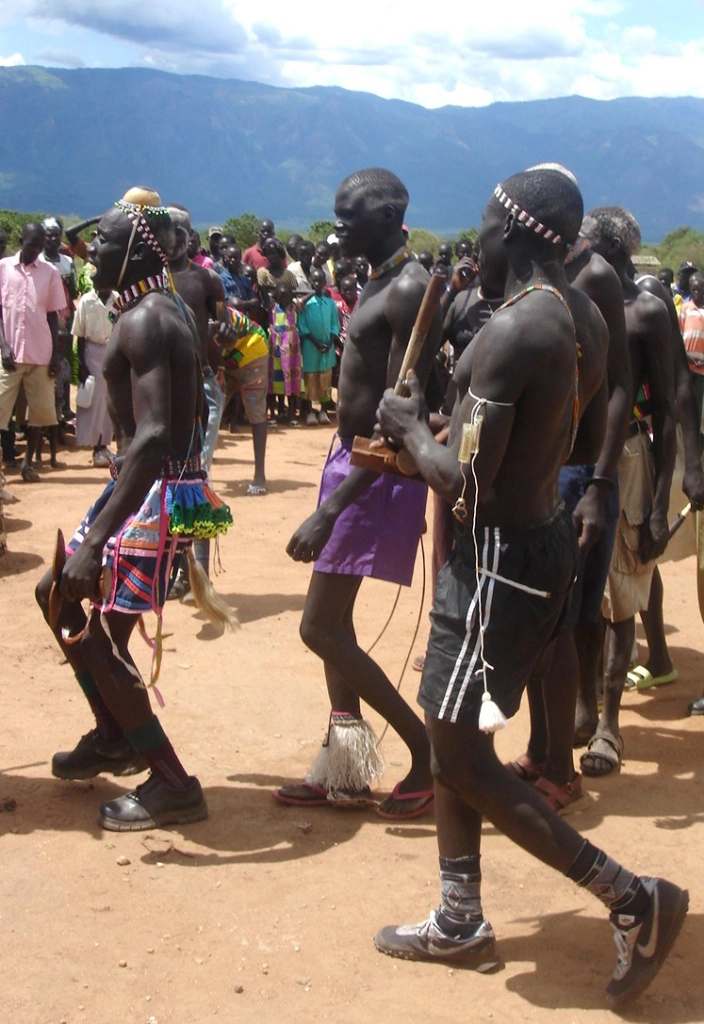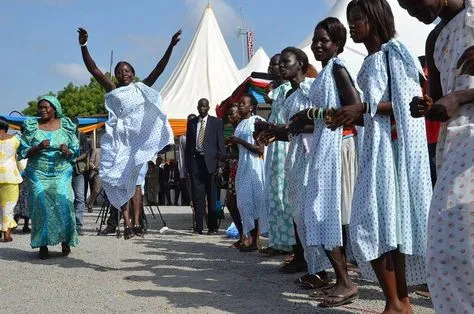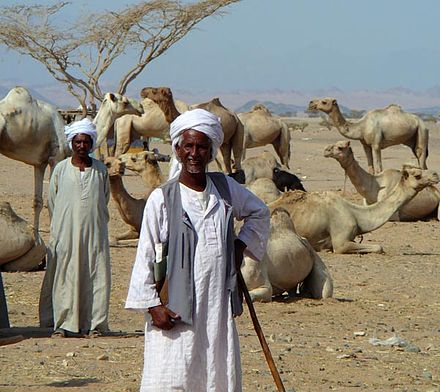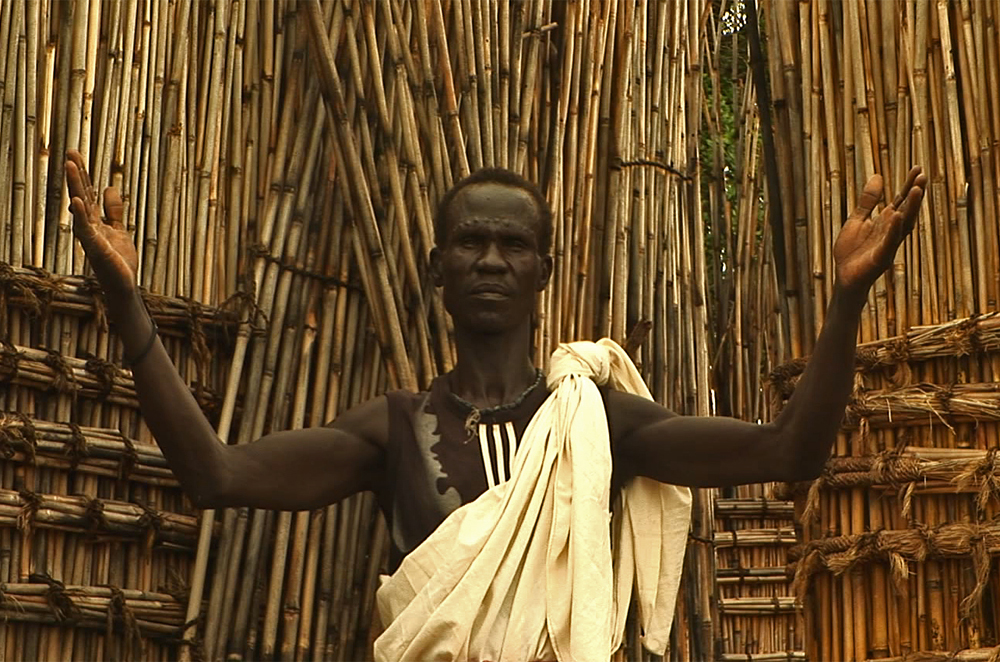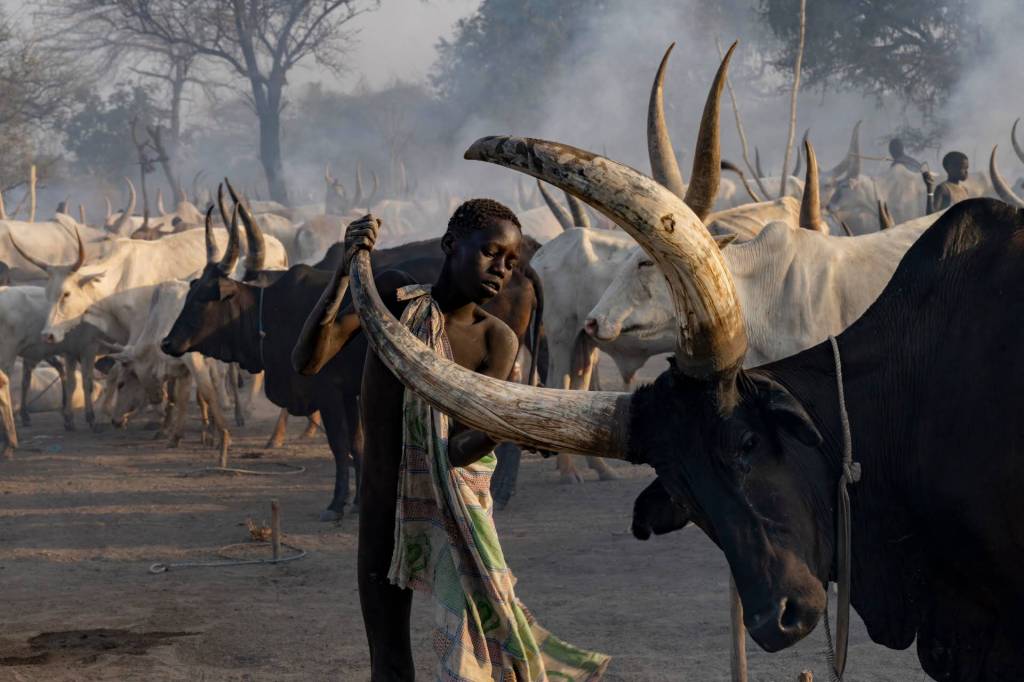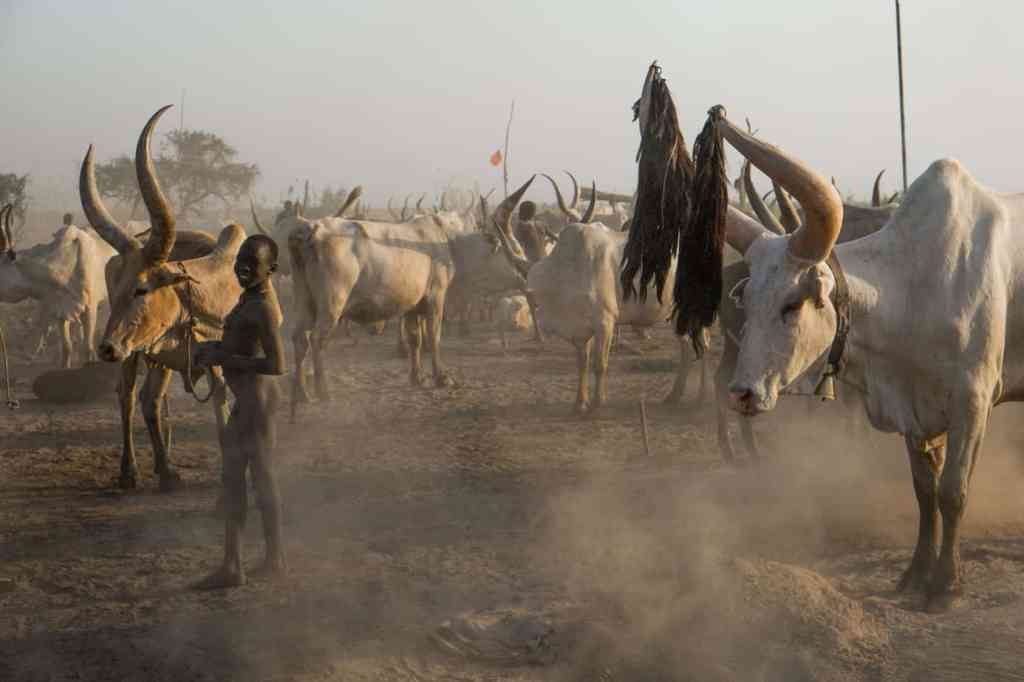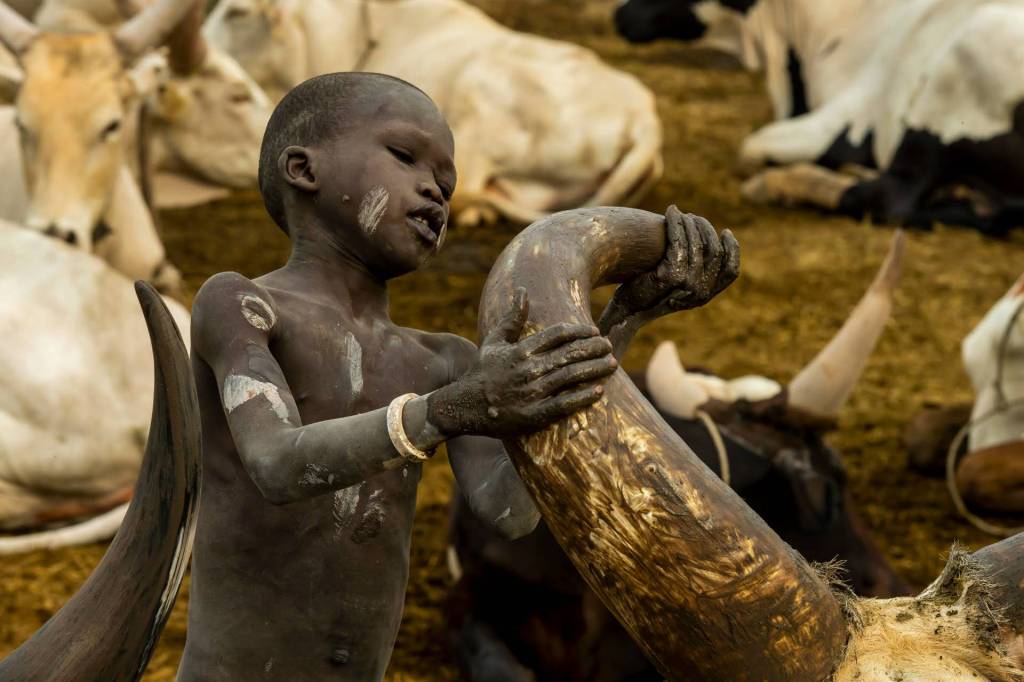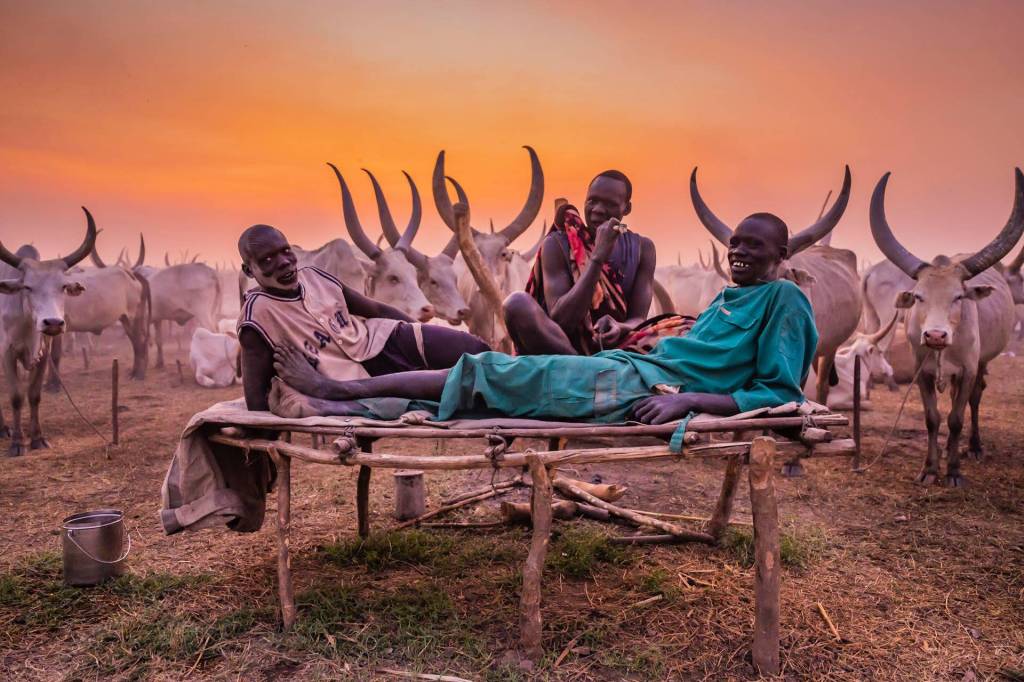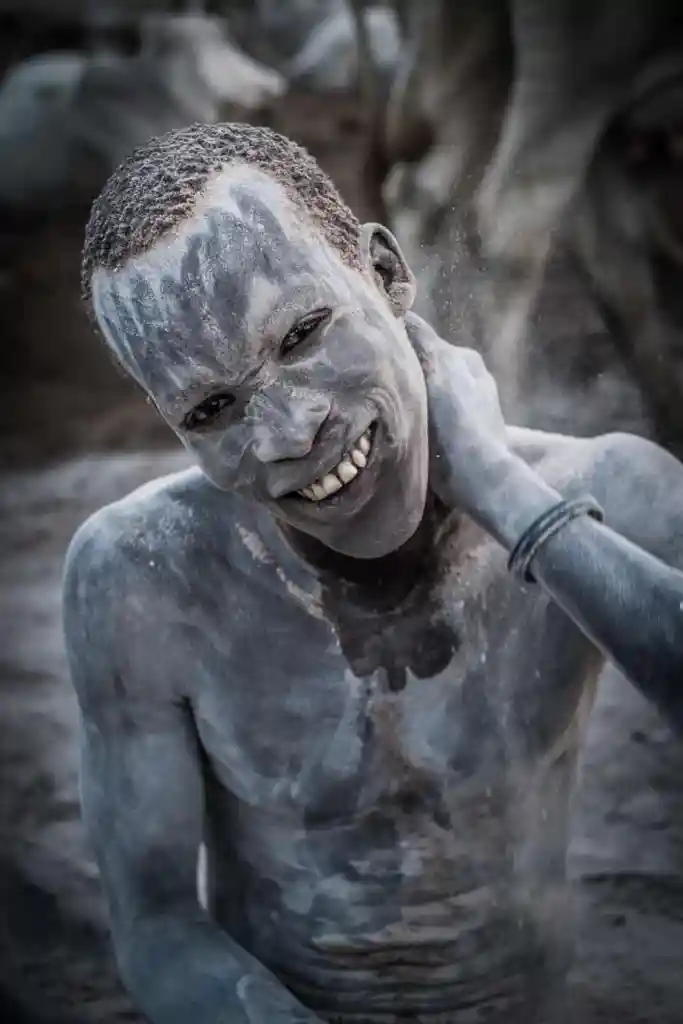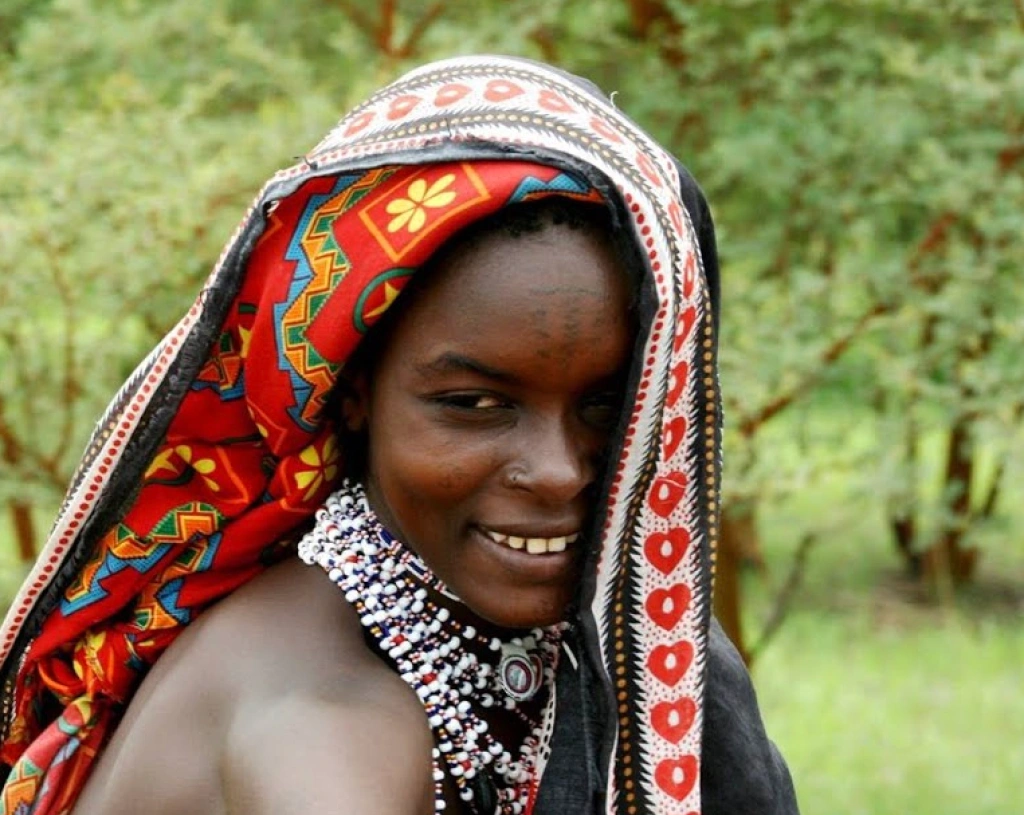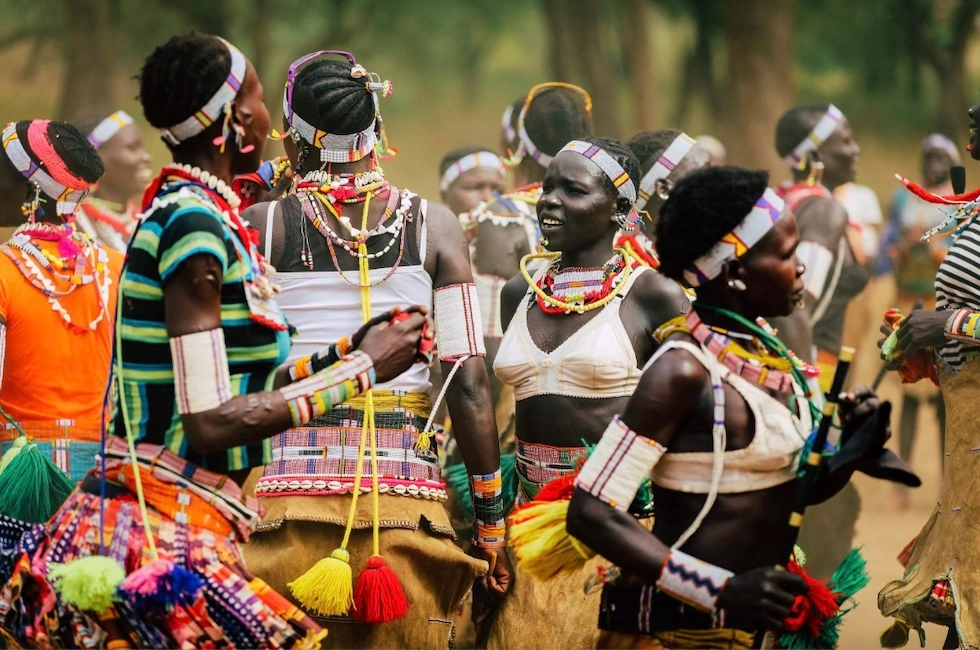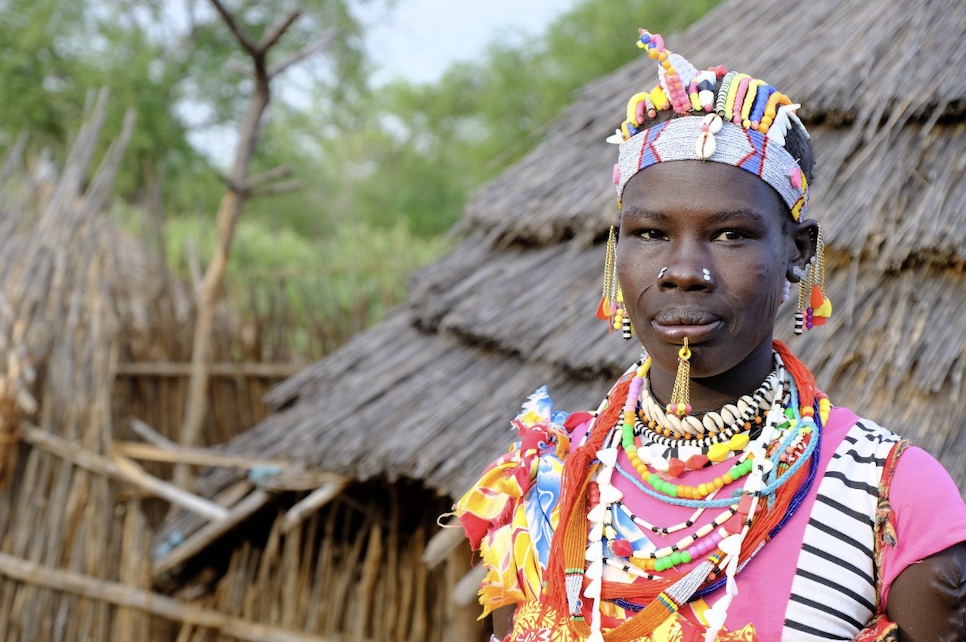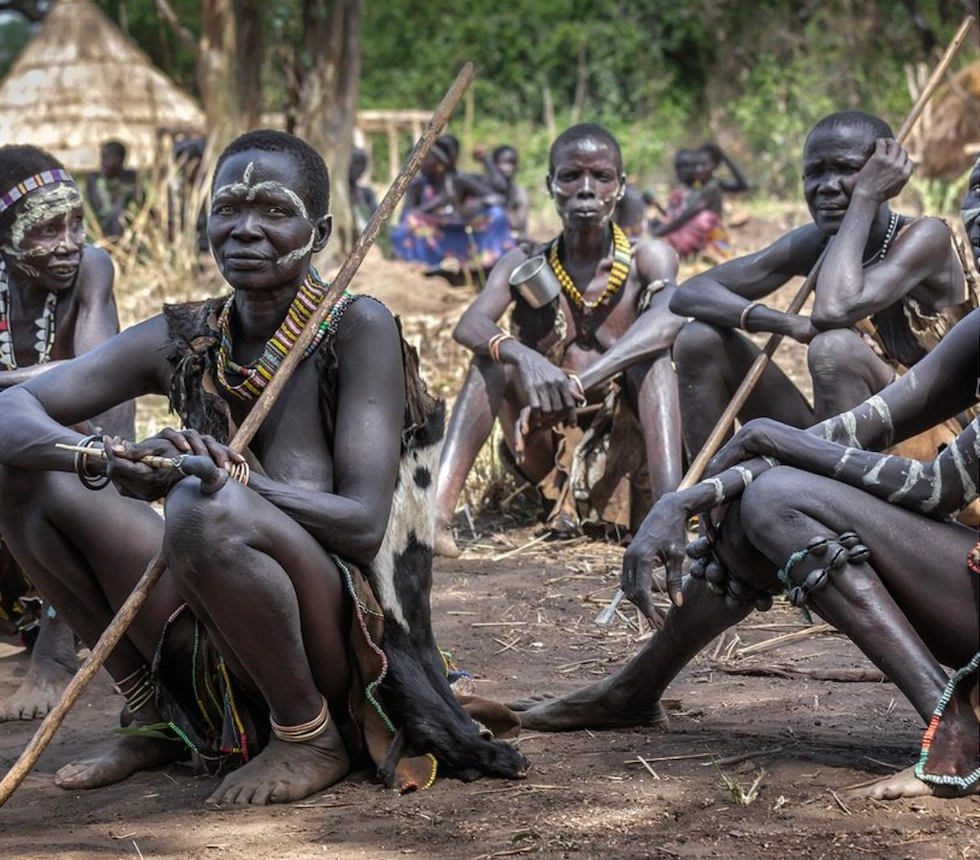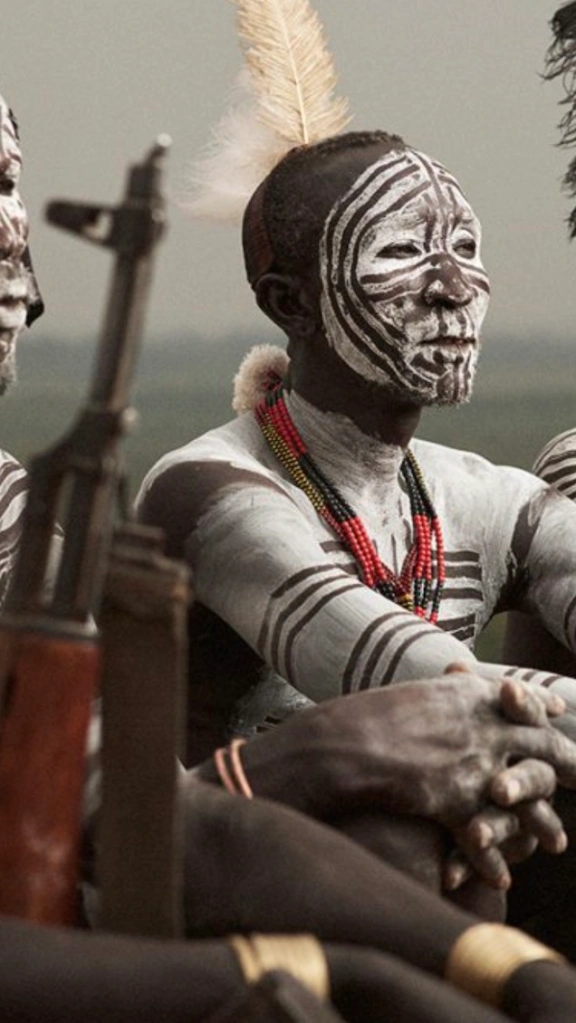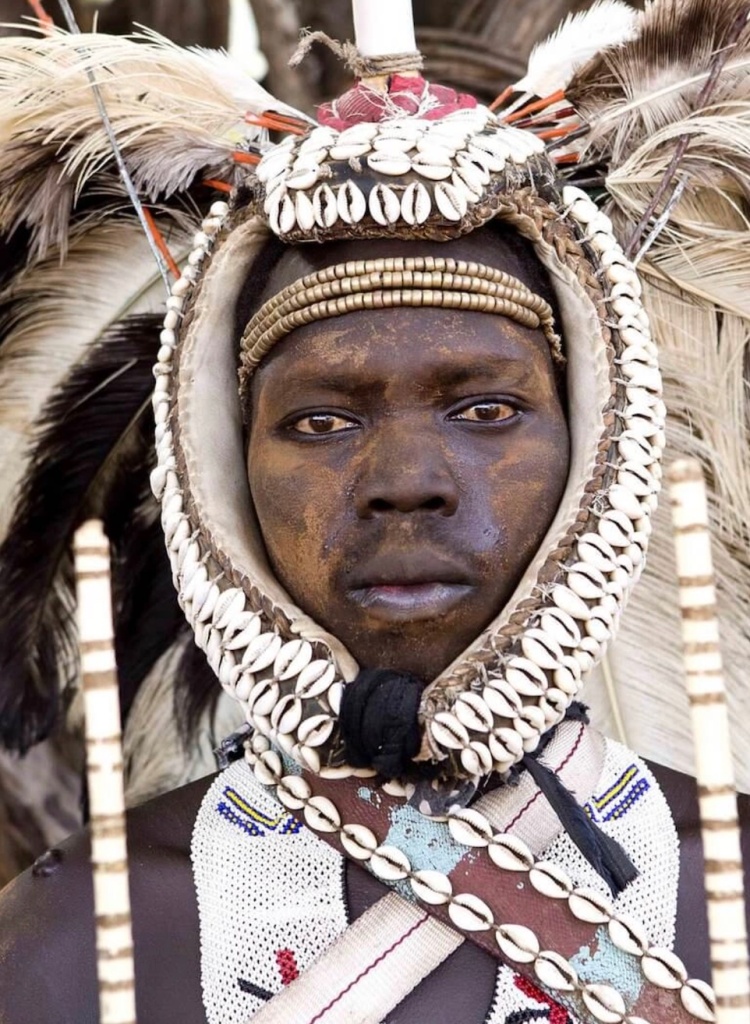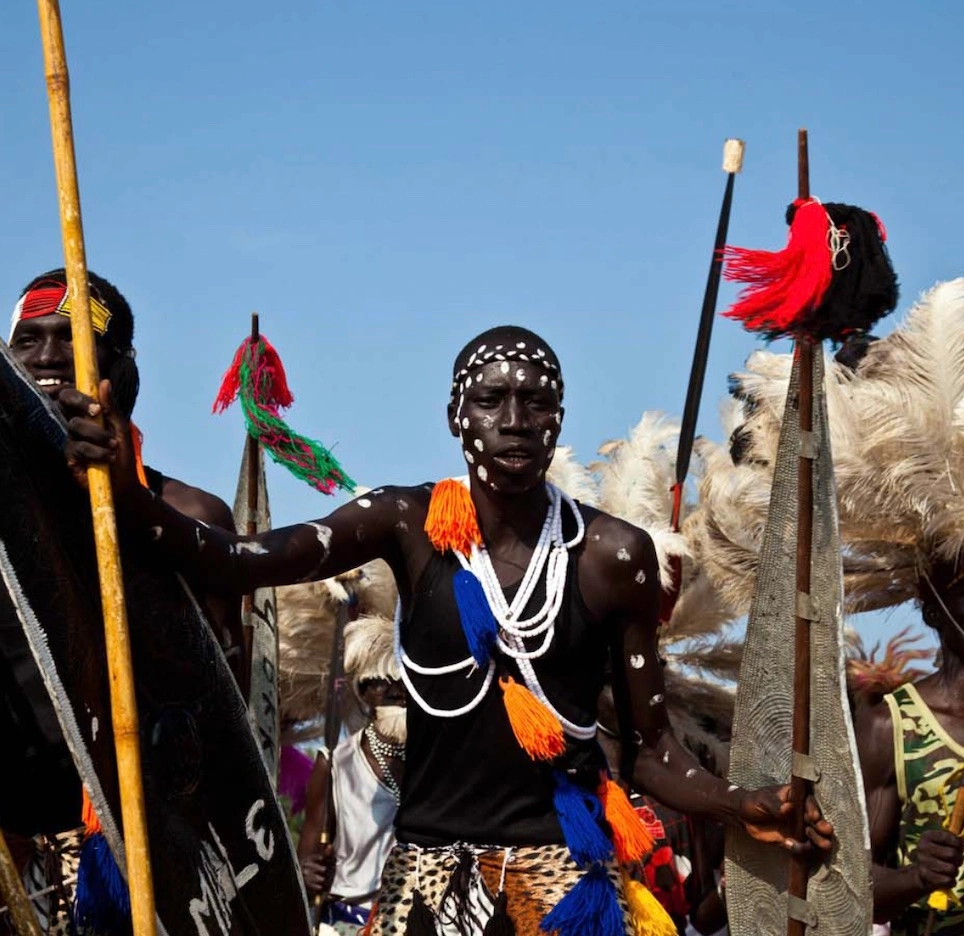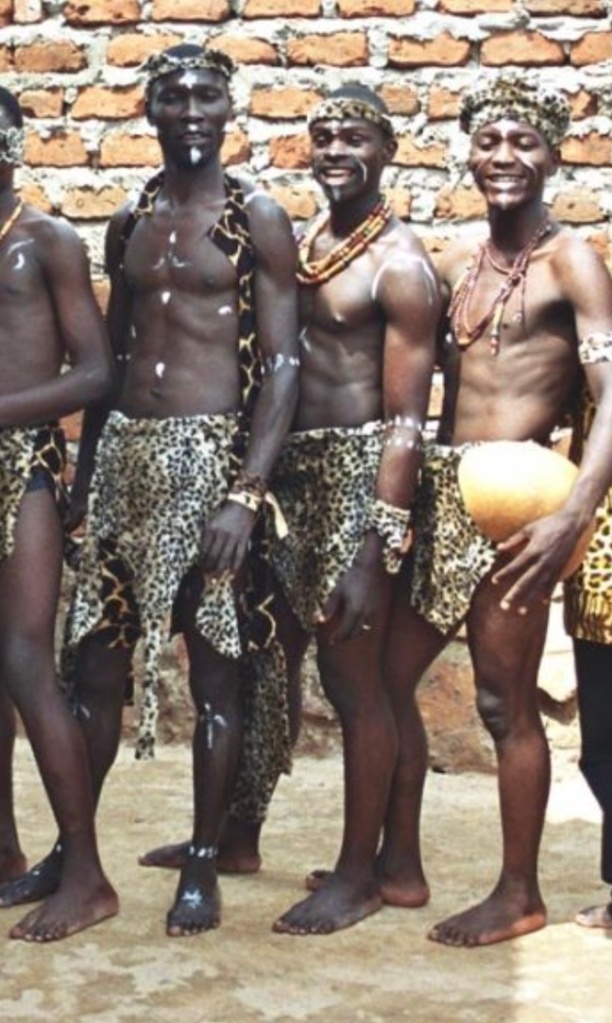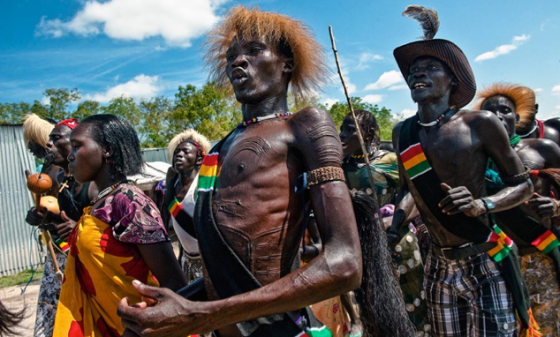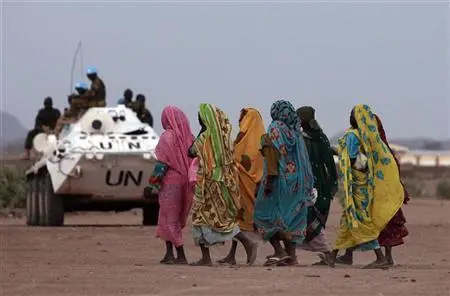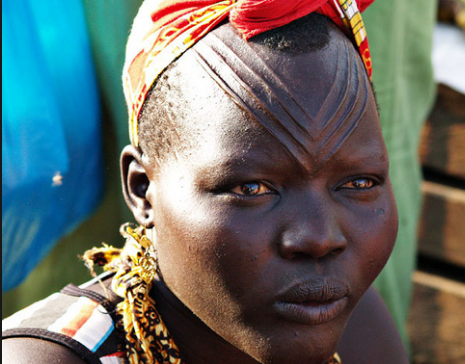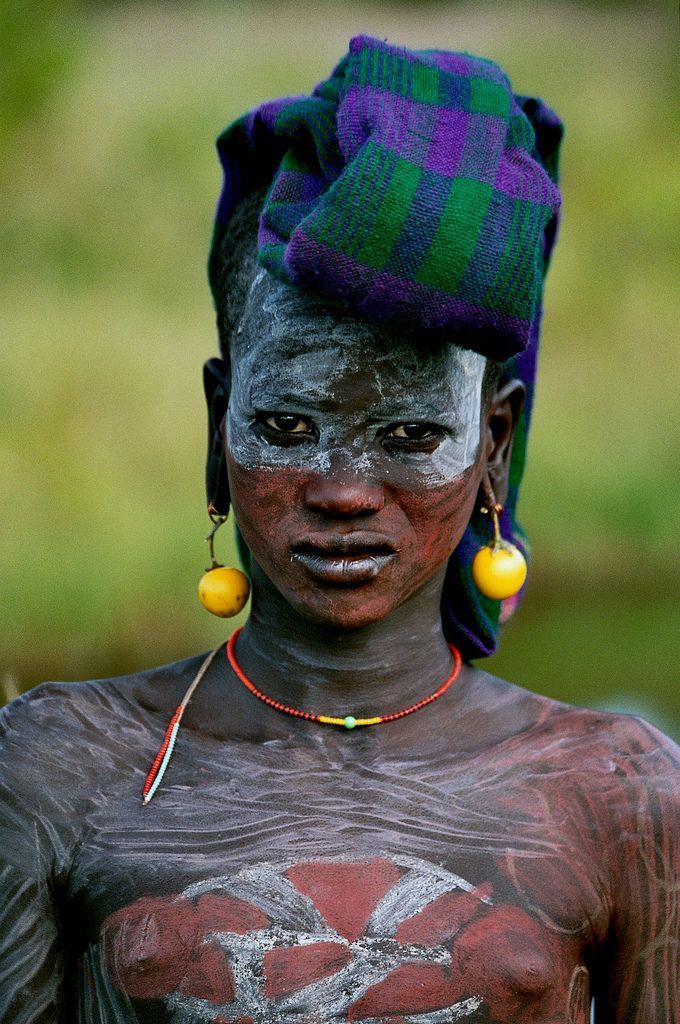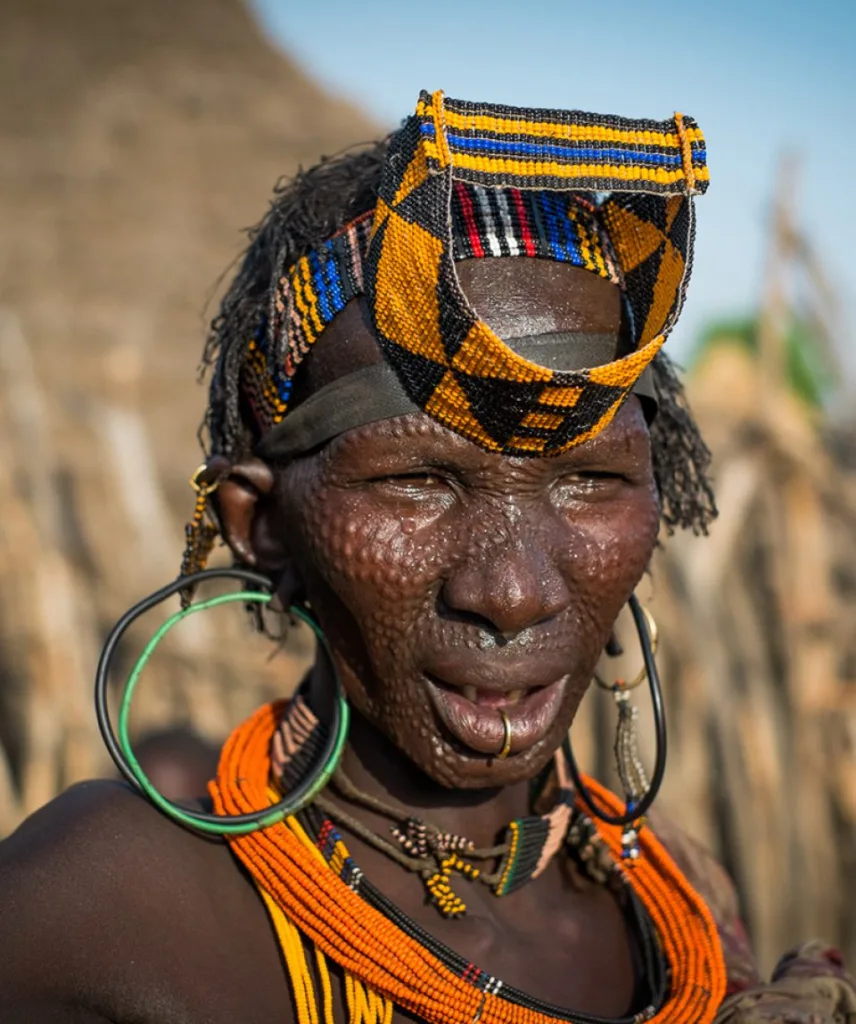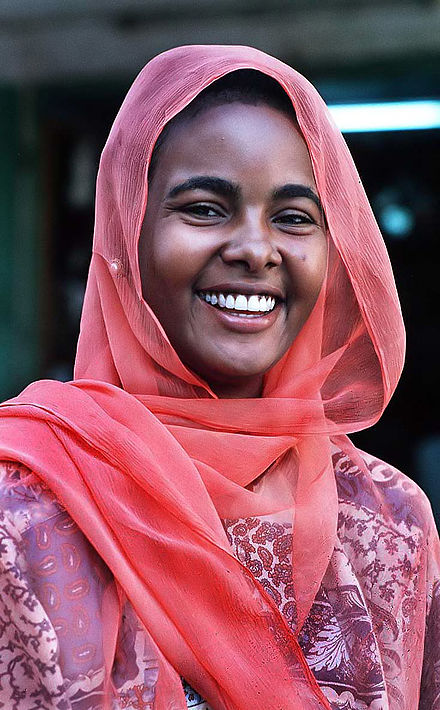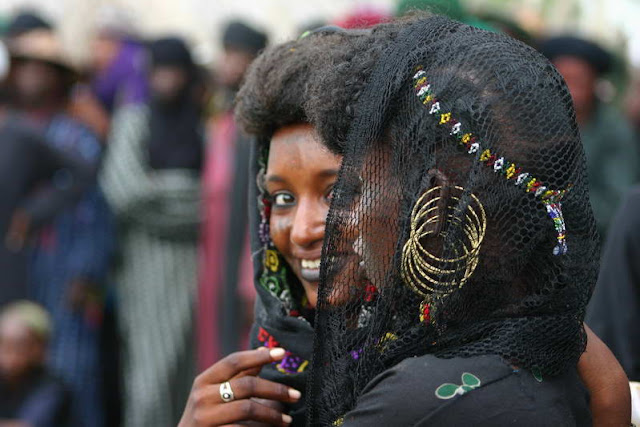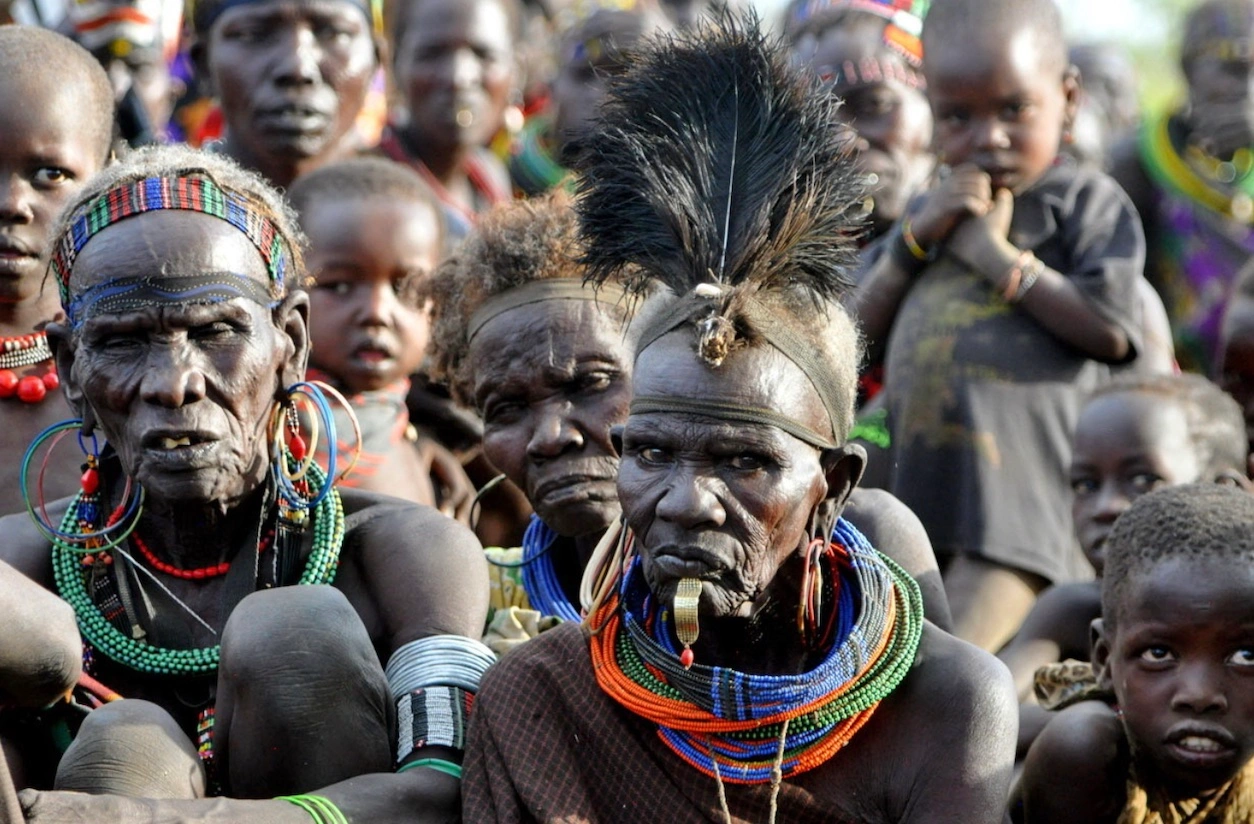South Sudan is famous for being the world’s youngest country, but the real joy of this beautiful land is its people. There are estimated to be around 60 different tribes living a traditional way of life in South Sudan, with an array of traditions, languages and dialects. Meet the Mundari, a cattle herding tribe living remotely along the White Nile river, north of South Sudan’s capital Juba. Their vast herds of sacred cattle graze on fertile river land, with the Mundari living mainly off the milk, not the meat. Wrestling and playing music are popular Mundari pastimes, and each morning they massage their cows with ash, a technique used to keep flies and insects away.
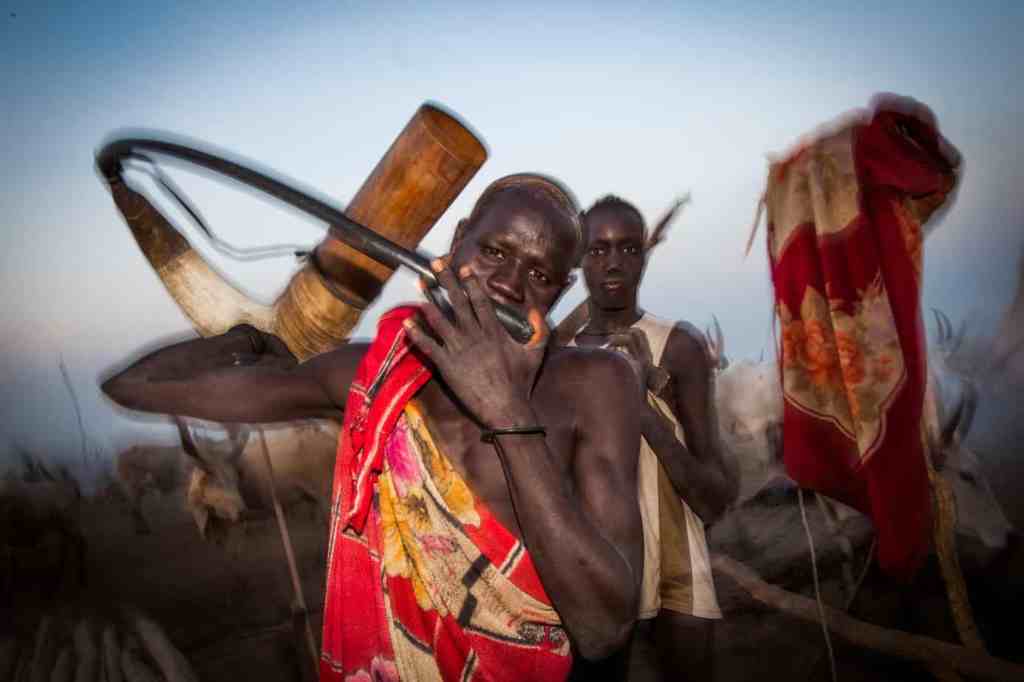
The Sudan is a multicultural country where hundreds of tribes are living there. These are some of them:
- The Nubian tribes
- The Bija tribe
- The Kababish tribe
- The Baggara tribe
- The Nuba tribe
- The Nuer tribe
- The Dinka tribe
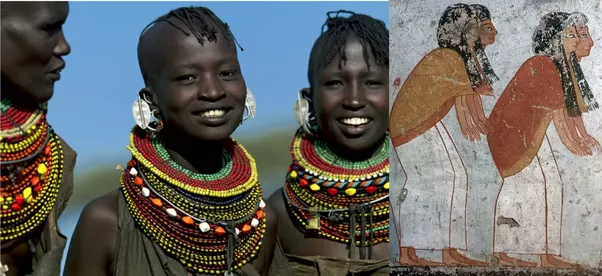
Despite common language, religion, and self-identification, Arabs did not constitute a cohesive group. They were highly differentiated in their modes of livelihood and ways of life. Besides the major distinction dividing Arabs into sedentary and nomadic, there was an old tradition that assigned them to tribes, each said to have a common ancestor. The tribal system has largely disintegrated in urban areas and settled villages, however, and retains its strength only among the nomads of the plains who raise cattle, sheep, and camels. Each Arab tribe or cluster of tribes is in turn part of a larger tribal grouping, of which the two largest supratribal categories in the early 1990s were the Juhayna and the Jaali (or Jaalayin). The Juhayna category consisted of tribes considered nomadic, although many had become fully settled. The Jaali encompassed the riverine, sedentary peoples from Dunqulah to just north of Khartoum and members of this group who had moved elsewhere. Some of its groups had become sedentary only in the twentieth century. Sudanese saw the Jaali as primarily indigenous peoples who were gradually arabized. Sudanese thought the Juhayna were less mixed, although some Juhayna groups had become more diverse by absorbing indigenous peoples. The Baqqara, for example, who moved south and west and encountered the Negroid peoples of those areas were scarcely to be distinguished from them.
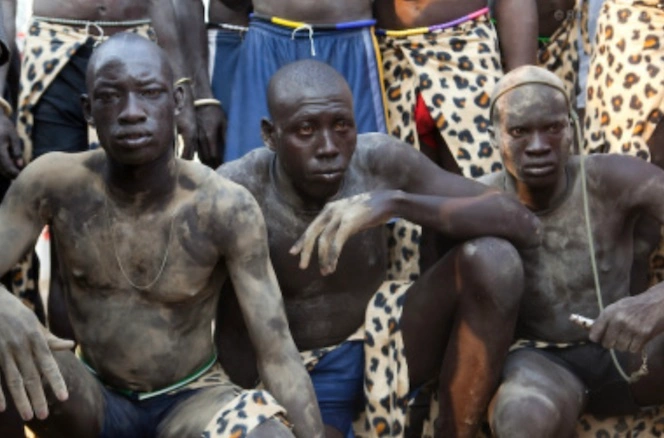
In Mundari culture, like for many tribes of the region, cattle play an important role in religion, birth and marriage. They are symbols of wealth and power. Every life event includes a reference to cows, the lives of which can be sometimes deemed more important than those of humans. A person’s position in society is established through the ownership of cattle – the size and shape of the horns being the most important features. Traditionally, Ankole-Watusi cows are considered sacred, with an owner’s wealth counted in live animals. Unfortunately, cattle are also the main source of conflict. Clashes seldom arise over common resources such as land but rather over animals and their ownership. Before the civil war, each Ankole-Watusi was worth as much as $500. This was the reference value used to calculate the bride price paid to a woman’s family. Following the end of the war, the number of middle-aged men in search of wives dramatically increased. This had a direct impact as it doubled the bride price from an average of 20 cows per bride to 40. This inflation has made cattle even more precious and has also increased the frequency of lethal cattle raids.
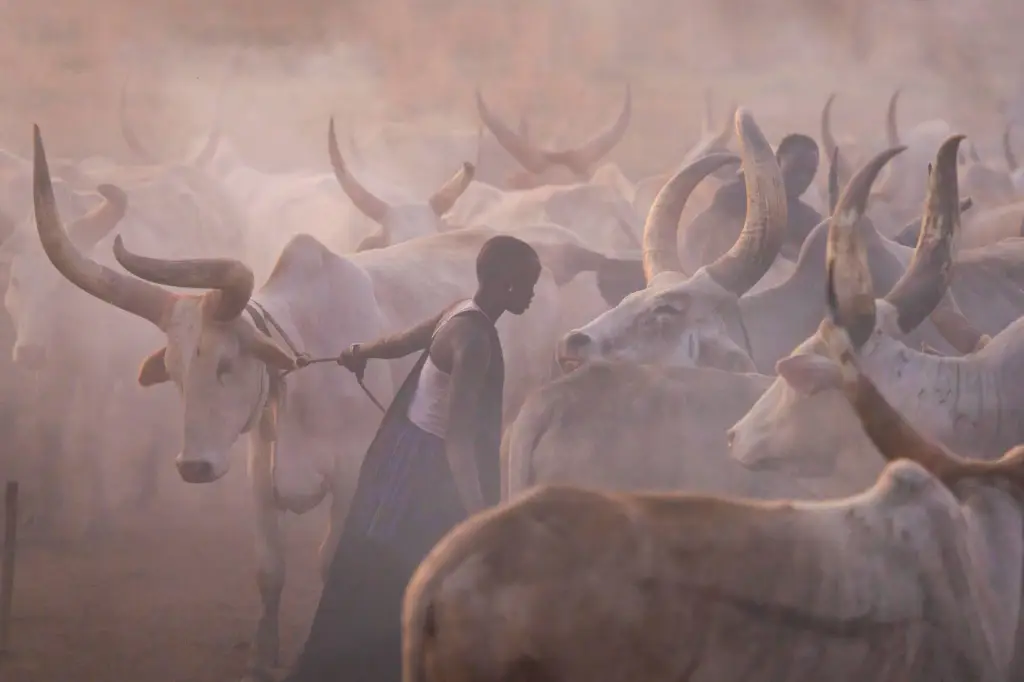
ETHNIC GROUPS OF SOUTH SUDAN
| Rank | Ethnic Group | Share of Population in South Sudan |
| 1 | Dinka | 36% |
| 2 | Nuer | 16% |
| 3 | Azande | 6% |
| 4 | Bari | 4% |
| 5 | Shilluk | 3% |
| 6 | Toposa | 2% |
| 7 | Otuho | 2% |
| 8 | Luo | 1% |
| 9 | Moru | 1% |
| 10 | Murle | 1% |
| Other Ethnic Groups | 28% |
- Dinka(Jieng)
- Nuer (naath)
- Acholi
- -Adio(Makaraka
- Aja
- Anyuak(Anyuaa)
- Atuot(Reel)
- Avukaya
- Azande
- Bai
- Baka
- Balanda-Boor
- Balanda-Bviri
- Banda
- Bari
- Binga
- Bongo
- Boya (sometimes called Larim, but this is actually a village of the Boya)
- Didinga
- Dongotona
- Falata (Arab Nomads)
- Feroghe
- Gollo
- Imatong
- Indri
- Jiye(Jie)
- Jur(Beli & Modo)
- Jurchol(luo)
- Kakwa
- Kara
- Keliku
- Kuku
- Lango
- Lokoya
- Lopit
- Lotuka (Otuho)(Logir and Ifoto are villages)
- Lugbwara
- Lulubo
- Maban
- Madi
- Mananger
- Mangayat
- Moro
- Moro Kodo
- Mundari
- Mundu
- Murle
- Ndogo
- Ngulngule
- Nyangatom
- Nyangwara
- Pari
- Pojullo
- Sere
- Shatt
- Shilluk(Chollo)
- Suri(Kachipo)
- Tenet
- Tid
- Toposa
- Uduk
- Woro
- Yulu
- Lokoro
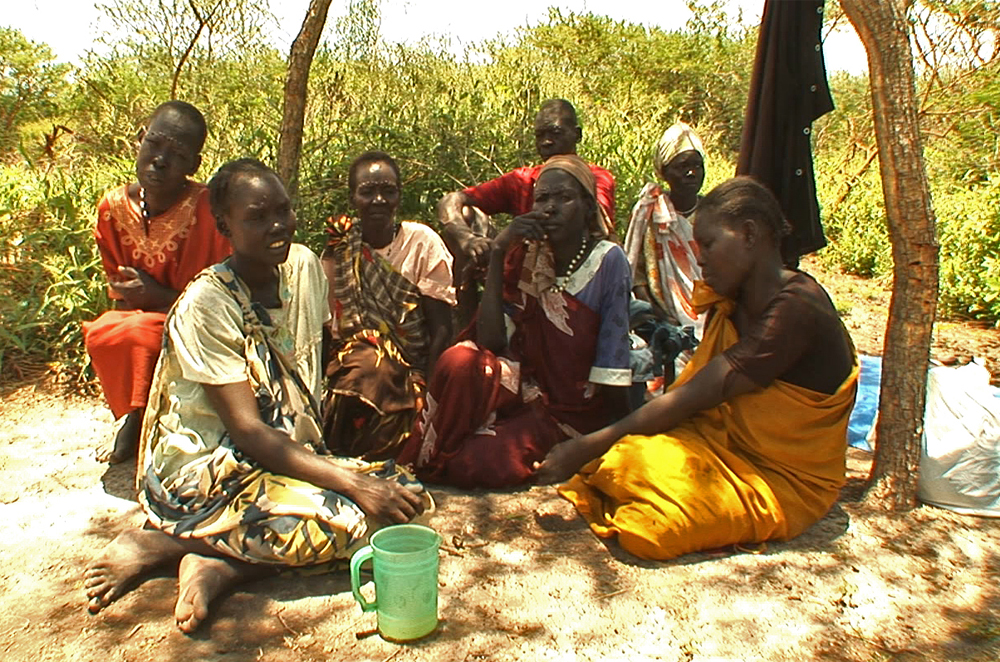
Indigenous people of South Sudan can be broadly categorized into the Nilotic, Nilo-Hamitic and the South Western Sudanic groups.
- Nilotic people include the Dinka, Nuer, Shiluk (Collo), Murle, Kachiopo, Jie, Anyuak, Acholi, Maban, Kuma, Lou (Jur), Bango, Bai, Gollo, Endri, Forgee, Chod (Jur), Khara, Ngorgule, Forugi, Siri, Benga, Agar, Pakam, Gok, Ciec, Aliap, Hopi, Guere, Atuot, Appak, Lango, Pari, Otuho and Ajaa.
- Nilo-Hamitic groups include the Bari, Mundari, Kakwa, Pojula, Nyangwara, Kuku, Latuko, Lokoya, Toposa, Buya, Lopit, Tennet and Diginga.
- The South-western Sudanic groups includes Kresh, Balanda, Banda, Ndogo, Zande, Madi, Olubo, Murus, Mundu, Baka, Avukaya, and Makaraka.
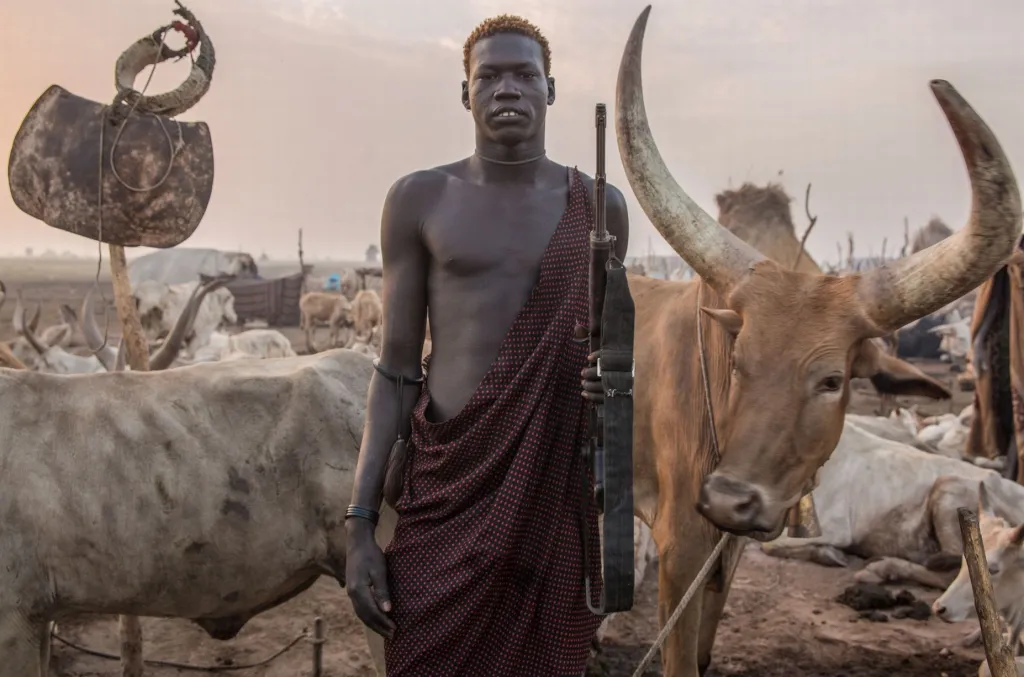
Sudan is a country in Africa. It has a population of 37 million people. With a land area of 1,861,068 km2 (712,300 sq mi), it is the third-largest country on that continent after Algeria and Libya. The capital is Khartoum. Sudan is in east Africa, next to Egypt and Eritrea. Sudan is officially called the Republic of the Sudan. Sudan’s amazing landscape and rich history has attracted many tourists. Sudan is known for its pyramids, mountains, deserts an more. Sudan borders Egypt, Eritrea, Ethiopia, Kenya, and Chad. Sudan is at the center of the African continent. The capital city is Khartoum. The population of Sudan is 39,430,000. The main ethnic groups are Arab and African. The official languages are Arabic and English. It encompasses a region where a variety of ethnic groups live in a mostly arid environment, with several areas experiencing drought-like conditions throughout much of the year. The largest city and capital is Khartoum. The River Nile flows through the country and eventually terminates in the Mediterranean Sea.
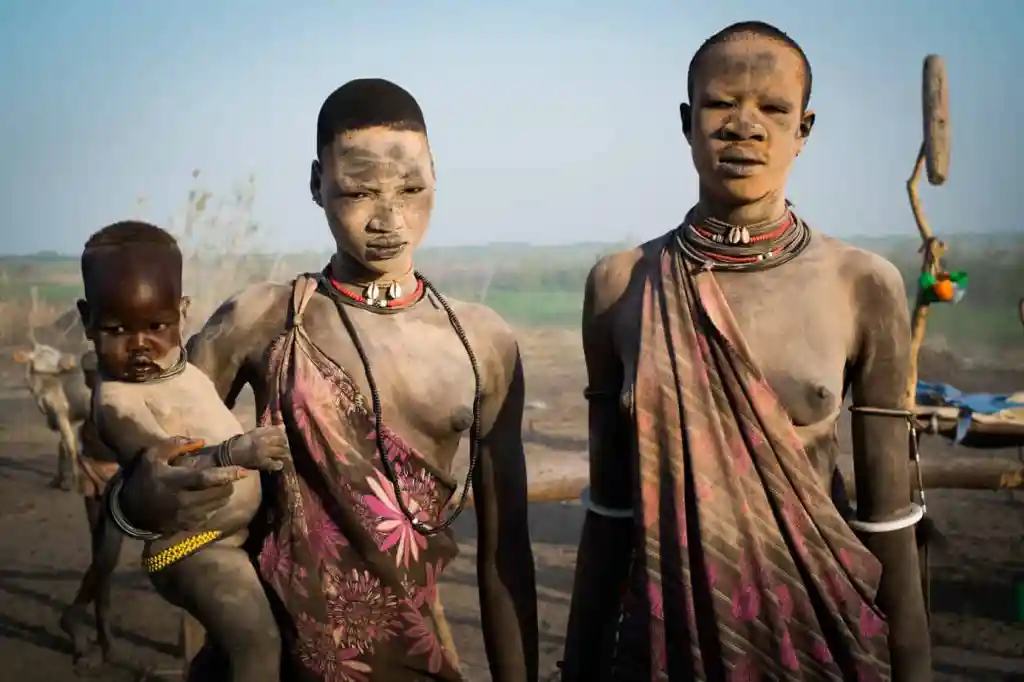
NUER PEOPLE
Nuer, people who live in the marsh and savanna country on both banks of the Nile River in South Sudan. They speak an Eastern Sudanic language of the Nilo-Saharan language family. The Nuer are a cattle-raising people devoted to their herds, although milk and meat must be supplemented by the cultivation of millet and the spearing of fish. Because the land is flooded for part of the year and parched for the rest of it, they spend the rainy season in permanent villages built on the higher ground and the dry season in riverside camps. Politically, the Nuer form a cluster of autonomous communities, within which there is little unity and much feuding; homicides are settled by payments of cattle effected through the mediation of a priest. The basic social group is the patrilineal lineage. Groups of lineages are organized into clans. The members of a clan have in their territory a slightly privileged status, although they form a minority of its population. The majority belong to other clans or are descendants of the neighbouring Dinka, large numbers of whom have been subdued by the Nuer and incorporated into their society. In each community the men are divided into six age sets.
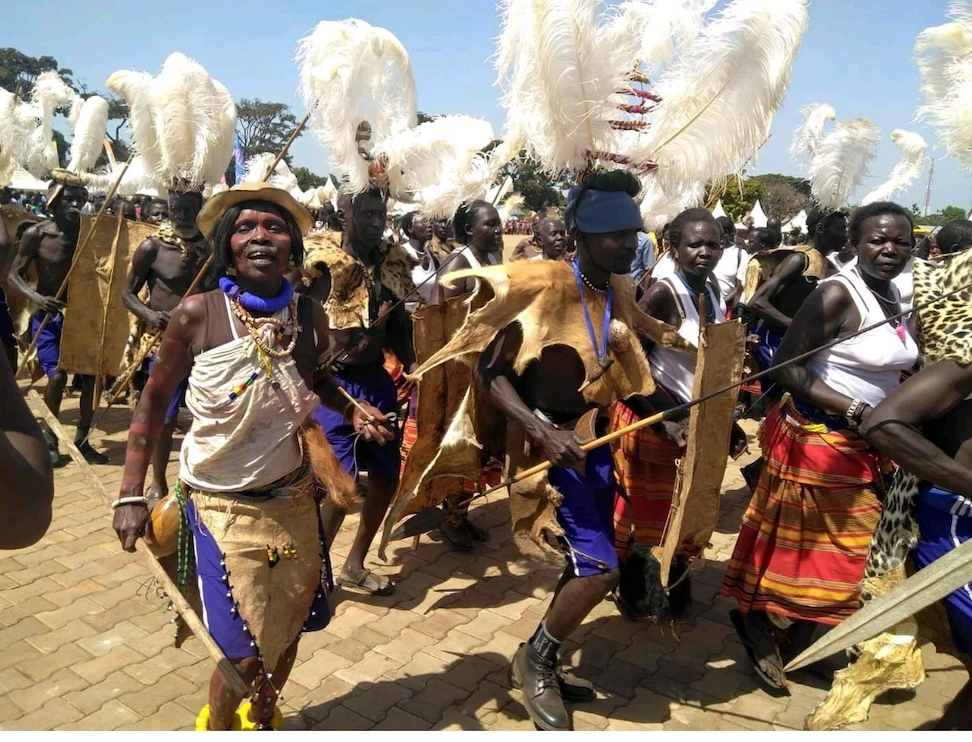
The ethnological classification of Hamitic, refers to indigenous ethnic groups in the northern regions of East Africa who share common ancestral and/or linguistic origins. Hamitic groups form the indigenous populations of Sudan’s Northern area. The Kushites, followed by the Nubians, form the most ancient of these populations. The civilization of Kush is considered by historians as one of the earliest and most advanced human civilizations. The Kushite identity appears to have vanished, perhaps by the sixteenth century, and melded into the Nubian and Arab groups. Although the Nubian and Kushite languages are not well studies, they both appear to be Afro-Asiatic; though some linguists categorize the Nubian language as Nilo-Saharan.
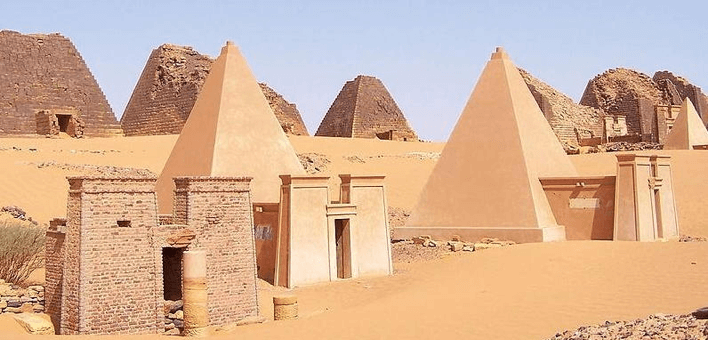
Indigenous Sudanese include Nilotic or Negroid peoples, of whom the Dinka form the largest portion, and constitute about 52% of the national population; Arabs account for an estimated 39% of the population and Beja for 6%. In all, there are nearly 600 ethnic groups. Foreigners constitute 2% of the total populace; other groups another 1%. About 25% of the population are practitioners of traditional indigenous religions. About 10% of the population are Christians, particularly in the south, where Christianity is reported to be growing rapidly. Most of the Christian community are professed Roman Catholics. Greek Orthodox, Coptic, and Anglican Christians are found in small numbers in towns. There is reported evidence, however, that many Christians continue to practice elements of traditional indigenous religions.
